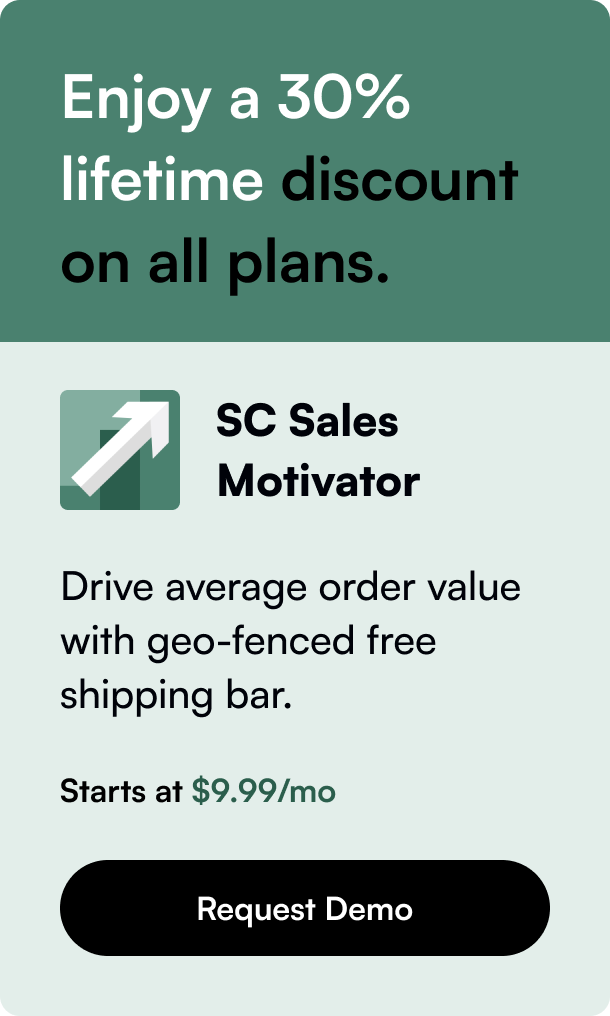Table of Contents
- Introduction
- The Need for Partial Payments in eCommerce
- Accepting Partial Payments on Shopify: The Basics
- Strategies for Implementing Partial Payments
- Real-life Success Stories
- FAQs on Partial Payments on Shopify
Introduction
Did you know that offering partial payments can significantly boost your sales and improve customer satisfaction? In today's fast-paced eCommerce environment, customers seek flexibility and convenience in payments more than ever before. Whether it's for a high-value item or managing cash flow better, partial payments can be a game-changer for both customers and businesses. With the growing demand for such payment options, knowing how to accept partial payment on Shopify becomes an indispensable tool in your eCommerce arsenal. This comprehensive guide aims to equip you with all the necessary information, strategies, and insider tips to effectively implement and benefit from partial payments on your Shopify store.
The purpose of this blog post is to demystify the process of accepting partial payments, explore innovative solutions, and showcase real-life examples to help you fully leverage this functionality. By exploring various scenarios and addressing common challenges, we aim to provide you with a clear roadmap to enhance your payment strategies, making your Shopify store more accommodating and appealing to a broader audience.
Whether you're looking to facilitate down payments, enable split payments, or offer installment plans, this guide will walk you through each step with clarity and precision. Get ready to unlock a new level of customer service and sales growth by mastering the art of partial payments on Shopify.
The Need for Partial Payments in eCommerce
In the world of eCommerce, the competition is fierce, and the businesses that succeed are those that adapt to their customers' needs. Offering partial payments is not just a convenience but a necessity for many shoppers. From layaways to installment payments, this flexibility can significantly enhance the shopping experience, leading to higher conversion rates and customer loyalty.
Understanding the mechanics behind Shopify's partial payment capabilities is crucial for implementing this feature effectively. While Shopify's native functionality might have its limitations, several workarounds and third-party apps are designed to bridge this gap, offering a seamless partial payment experience.
Accepting Partial Payments on Shopify: The Basics
Shopify's platform inherently supports certain types of partial payments, especially through Shopify POS for in-store purchases. However, when it comes to online sales, merchants often need to think creatively or seek third-party solutions.
Utilizing Draft Orders for Partial Payments
One of the simplest methods to accept partial payments on Shopify is through the use of Draft Orders. This feature allows merchants to create orders on behalf of their customers, send invoices via email, and collect payments. While this method does not automate the process, it provides a manual workaround to request an initial deposit and follow up for the remaining balance.
Leveraging Third-Party Apps
Several apps on the Shopify App Store offer more sophisticated partial payment solutions. Apps like Split Payment & Deposit by SpurIT stand out for their flexibility, enabling merchants to offer deposit payments, split payments, and even installment payments with ease. These apps integrate directly with your Shopify store, streamlining the partial payment process and enhancing customer experience.
Strategies for Implementing Partial Payments
Implementing partial payments requires more than just enabling a function; it involves strategic thinking and consideration of your customers' needs. Here are some effective strategies to consider:
- Offer Clear Terms and Conditions: Transparency is key. Ensure that your customers understand the terms of partial payments, including any deadlines, interest rates, or fees.
- Automate Reminders: Utilize email marketing or app functionalities to send automated reminders for upcoming payments, reducing the administrative burden and ensuring timely collections.
- Customize Options Based on Product or Service: Not all products may suit partial payments. Consider offering this option for higher-priced items or customizable services that require a lead time.
Real-life Success Stories
Many Shopify merchants have witnessed a positive impact on their sales and customer satisfaction by offering partial payments. For instance, a high-end furniture store introduced a 50% down payment option for custom orders, resulting in an increase in pre-orders and a significant improvement in cash flow. Another example includes a fashion retailer who implemented installment payments for luxury items, attracting a broader customer base who were previously hesitant due to upfront costs.
FAQs on Partial Payments on Shopify
Q: Can I charge interest on installment payments?
A: Yes, but make sure this is clearly communicated to your customers and complies with local regulations.
Q: Are there any downsides to offering partial payments?
A: While offering flexibility, partially paid orders might complicate inventory management and financial forecasting if not managed carefully.
Q: Can I set up partial payments for online orders without an app?
A: Directly on Shopify’s standard setup, your best bet involves manual workarounds like using Draft Orders. For automated solutions, third-party apps are necessary.
Q: Do partial payment options increase cart abandonment rates?
A: On the contrary, offering partial payments often reduces cart abandonment by providing financial flexibility to customers.
In conclusion, mastering how to accept partial payments on Shopify can set your store apart, offering the flexibility modern consumers expect. By understanding the tools at your disposal, strategically implementing partial payments, and learning from success stories, you can enhance your store's attractiveness and drive sales. Whether through Shopify’s built-in features or innovative apps, the path to accommodating customer needs and boosting your business's growth is clearer than ever.








